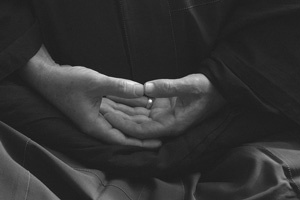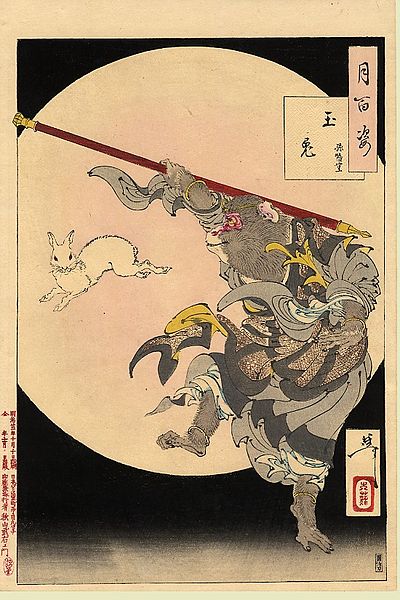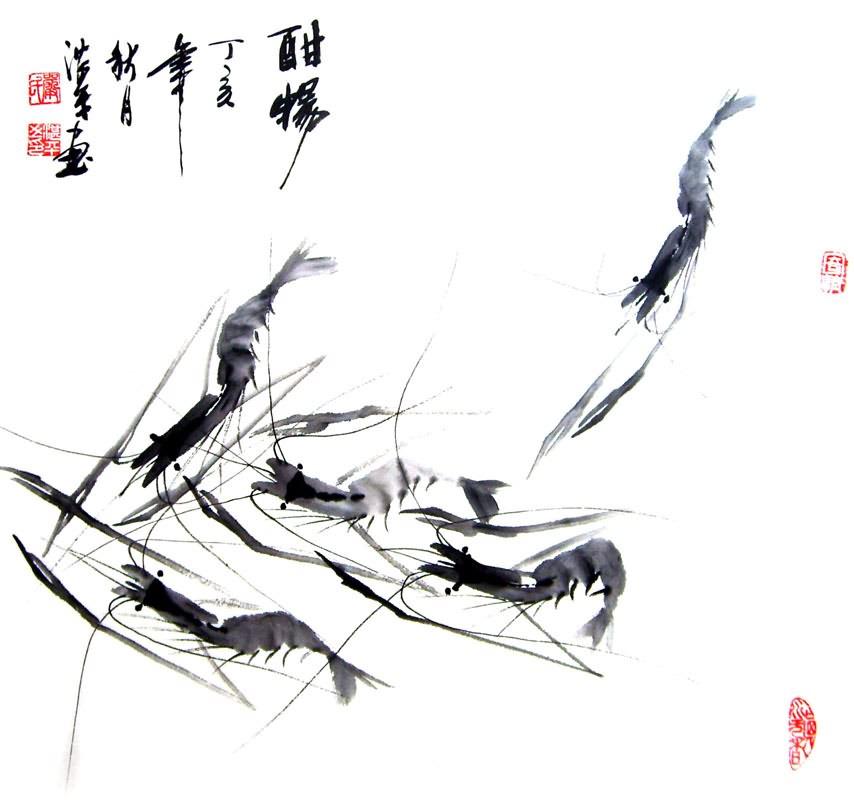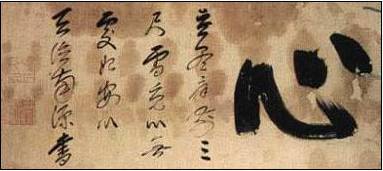"The eternal lamp represents perfect awareness. Likening the illumination of awareness to that of a lamp, those who seek liberation see their body as the lamp, their mind as its wick, the addition of discipline as its oil, and the power of wisdom as its flame. By lighting this lamp of perfect awareness they dispel all darkness and delusion. And by passing this Dharma on to others they’re able to use one lamp to light thousands of lamps. And because these lamps likewise light countless other lamps, their light lasts forever." - The First Zen Patriarch Bodhidharma (early 5th century AD), Breakthrough Sermon.
In Part 1 the symbolic use of water and fire within mindfulness meditation traditions was referenced with an emphasis on ocean metaphors. In Part 2, teachings based around the properties of fire and alchemy - how transformations take place within heated vessels filled with water were discussed. In this third and last part, mindfulness meditation teachings presenting the element of fire as an illuminator and the element of water as lakes and rivers will be looked at.
Japanese 'Soto Zen' Founder Master Eihei Dogen, in his book Shobogenzo (Translated by Hubert Nearman, 2007), referred to the training ground for the Buddhas as a blazing fire, p294:
"The training ground for the turning of the Wheel of the Dharma by all the Buddhas in the three temporal worlds is undoubtedly within the Blazing Fire: within the Blazing Fire is undoubtedly the training ground for Buddhas."A little later Dogen further states, p312:
"The Blazing Fire expresses both the Buddha and the Dharma. The Buddha and the Dharma both express the Blazing Fire."Vietnamese Zen teacher Thich Nhat Hanh, in his book Understanding Our Mind (2001), equates this blazing fire to our focused consciousness which can bring us a breakthrough in our practice, p27:
"In Buddhist meditation, we practice concentration, bringing everything into sharp, clear focus. This practice is called one-pointedness of mind (ekagrata). The object of our concentration— the queen bee around which our swarming thoughts can gather—may be our breathing, a leaf, a pebble, a flower, or the object of our meditative focus. In the practice, we are given methods to help us concentrate the energy of our mind consciousness, to not let it become distracted. This practice is like putting a spotlight on the object of our concentration, just as when a singer or dancer is performing on stage and the spotlight is focused only on her. We focus our minds intently on the object of our concentration. When we use a lens to focus sunlight on one point, its energy is concentrated so effectively that we can burn a hole in a piece of cloth. In the same way, we focus our mind consciousness on one point in order to get a breakthrough."
Zen Master Dogen spoke of a breakthrough during practice as a flaming blue lotus, in Shobogenzo, p553:
"the moment when the blue lotus bursts into bloom is like being in the midst of a fire at the time of fire [Footnote: The blue lotus refers to the blossoming of the spiritual flower of one’s training and enlightenment, not to an actual plant.]. The fire’s sparks and flames all converge at the point where the blue lotus bursts into bloom at the very moment when it bursts into bloom. If it were not the time and place of the blue lotus’s blossoming, not even a single spark of fire would emerge, not even a single spark of fire would come to life. You need to know that there are hundreds of thousands of blue lotuses in a single spark of fire: they blossom forth throughout boundless space and throughout the earth. They blossomed forth in the past and they blossom forth in the present. When you witness the time and place of the fire emerging, you are witnessing the blossoming of the blue lotus. Do not let the time and place of the blue lotus pass you by, but be a witness to its blossoming.
❀
An enlightened one of long ago once said in a poem, “The blue lotus blooms amidst the fire.” Thus it is that the blue lotus invariably blossoms forth in the midst of the fire. If you wish to know where ‘being in the midst of the fire’ is, it is the very place where the blue lotus blossoms forth."
 |
| A lotus pond outside Angkor Wat Temple. Photo taken by the author during a visit to Cambodia in 2009. |
Like a lotus, however, it seems we must begin from within the depths of the lake. Without an understanding of what potential tranquility and nourishment is held within and around us, we will not be able to 'blossom'. Mindfulness meditation teacher, Dr Jon Kabat-Zinn, goes into detail about 'lake meditation' practice in his book Wherever You Go, There You Are (2004), p143:
"In the lake meditation, we sit with the intention to hold in awareness and acceptance all the qualities of mind and body, just as the lake sits held, cradled, contained by the earth, reflecting sun, moon, stars, trees, rocks, clouds, sky, birds, light, caressed by the air and wind, which bring out and highlight its sparkle, its vitality, its essence."As one sits like a lake, one's mind can settle into peaceful acceptance. American Zen teacher, Charlotte Joko Beck writes of this process in her book Nothing Special - Living Zen (1995), p98-99:
"The ancient words say, “Do you have the patience to wait until your mind settles and the water is clear? Can you remain unmoving until the right action arises by itself?”
 |
| Five Flower Lake, China. |
"The self-centered self becomes more transparent, clearer, so that we can settle right through it. As the mud settles and the water becomes clearer, we can see the jewel—almost as if we were in tropical waters and could look into the depths and see the colored fish and plants."The author of Mindfulness for Dummies (2010) gives advice on practicing the lake meditation method as follows, p129:
"You’re both the deep, still lake underneath, and the ripples on the surface. [...] Allow yourself to feel your own tranquillity and serenity underneath the turbulent surface. [...]... allow the continual change that persistently unfolds around and in the lake to be part of the natural process of nature, and even embrace the beauty of it in yourself... [...] Enjoy the vision of the lake as it effortlessly reflects the sun and sky, birds and bees, plants and animals during the day, and the exquisite pale moon and twinkling stars at night, in the dark, cool sky – ever present, always changing, and yet always the same."
 |
| A lake in a park in Sanya, Hainan Island, China, taken by the author in 2009. In the morning and evening, this lake is surrounded by Chinese people doing exercise and mindful activities. |
"With increased one-pointedness comes an experience of inner harmony and stillness, as the sediment in the turbulent lake of your mind gradually settles, leaving the water clean and clear. This experience is generally accompanied by feelings of calm and relaxation — and occasionally by other pleasurable feelings like love, joy, happiness, and bliss"However, there will always be some movement of the water. Dr. Kabat-Zinn mentions this feature in Wherever You Go, There You Are, p31:
"There are always waves on the water. Sometimes they are big, sometimes they are small, and sometimes they are almost imperceptible. The water's waves are churned up by winds, which come and go and vary in direction and intensity, just as do the winds of stress and change in our lives, which stir up waves in our minds. People who don't understand meditation think that it is some kind of special inner manipulation which will magically shut off these waves so that the mind's surface will be flat, peaceful, and tranquil. But just as you can't put a glass plate on the water to calm the waves, so you can't artificially suppress the waves of your mind, and it is not too smart to try. It will only create more tension and inner struggle, not calmness. That doesn't mean that calmness is unattainable. It's just that it cannot be attained by misguided attempts to suppress the mind's natural activity."

In order to flow in harmony with the natural movement of the water, we can look for a more dynamic metaphor in rivers. Thich Nhat Hanh relates our bodies to rivers in many of his books. In The Heart of Buddha's Teaching (1998) he writes p176:
"Learn to look at your body as a river in which every cell is a drop of water. In every moment, cells are born and cells die. Birth and death support each other."More detail on this perspective is given in Peace is Every Step (2005), p39:
"In us, there is a river of feelings, in which every drop of water is a different feeling, and each feeling relies on all the others for its existence. To observe it, we just sit on the bank of the river and identify each feeling as it surfaces, flows by, and disappears."In The Sun My Heart (1988), Thich Nhat Hanh warns against attempting to go against the current, p7:
"Our thoughts and feelings flow like a river. If we try to stop the flow of a river, we will meet the resistance of the water. It is better to flow with it, and then we may be able to guide it in ways we want it to go. We must not attempt to halt it."

In The Miracle of Mindfulness (1987), he speaks of emulating the flowing waterplants living within the river, p35:
"Be like the waterplants which flow with the current, while beneath the surface of the water the riverbed remains motionless. Hold on to nothing but your breath and the half smile."Earlier in the same book, he uses a river metaphor to describe the ideal quality of one's breath during meditation, p20:
"Your breath should be light, even, and flowing, like a thin stream of water running through the sand. Your breath should be very quiet, so quiet that a person sitting next to you cannot hear it. Your breathing should flow gracefully, like a river, like a watersnake crossing the water, and not like a chain of rugged mountains or the gallop of a horse."Finally, in The Sun, My Heart, Thich Nhat Hanh introduces the sun's role shining down upon the river of our perceptions - as our awareness, p9-10:
"The river of our perceptions continues to flow, but now, in the sunlight of awareness, it flows peacefully, and we are serene. The relation between the river of perceptions and the sun of awareness is not the same as that of an actual river and the actual sun. Whether it is midnight or noon, whether the sun is absent or its penetrating rays are beaming down, the waters of the Mississippi River continue to flow, more or less the same. But when the sun of awareness shines on the river of our perceptions, the mind is transformed. Both river and sun are of the same nature."
"The Sutra of Ten Stages says, "in the body of mortals is the indestructible buddha-nature. Like the sun, its light fills endless space, But once veiled by the dark clouds of the five shades, it’s like a light inside a jar, hidden from view."
[...]
"If you can simply concentrate your mind’s Inner Light and behold its outer illumination, you’ll dispel the three poisons and drive away the six thieves once and for all. And without effort gain possession of an infinite number of virtues, perfections, and doors to the truth, Seeing through the mundane and witnessing the sublime is less than an eye-blink away, Realization is now."

Reading all of these teachings, it seems we can gain some deep guidance for mindfulness meditation practice. However, as the above teachers would likely advise, we must not cling onto these words as truth. Thich Nhat Hanh explains this situation in Understanding Our Mind, p180:
"Objects of knowledge are like water that has become ice and prevents the river from flowing. We need knowledge, but we have to use it intelligently. When we think that our present knowledge is paramount, our way ahead is blocked. Our knowledge has become an obstacle."In order to practice properly, one needs to go beyond the limited guiding words of teachers and into the realm of pure awareness where there are no true boundaries between phenomena. Thich Nhat Hanh presents this perspective relative to the nature of water in The Heart of Buddha's Teaching, p149:
"To see the wondrous nature of water, you need to look beyond the sign (appearance) of the water, and see that it is made of non-water elements. If you think that water is only water, that it cannot be the sun, the earth, or the flower, you are not correct. When you can see that the water is the sun, the earth, and the flower, that just by looking at the sun or the earth you can see the water, this is "the signlessness of signs."

Letting go of all divisive constructs of the mind was also reinforced by Bodhidharma. He related one example in his Wake-up Sermon using water and fish as follows:
"The mind gives birth to the Buddha. But although the Buddha comes from the mind, the mind doesn’t come from the Buddha, just as fish come from water, but water doesn’t come from fish. Whoever wants to see a fish sees the water before he sees the fish. And whoever wants to see a Buddha sees the mind before he sees the Buddha. Once you’ve seen the fish, You forget about the water. And once you’ve seen the Buddha, you forget about the mind. If you don’t forget about the mind, the mind will confuse you, just as the water will confuse you if you don’t forget about it."And so with those last words from the founder of Zen, we complete our journey through the use of fire and water metaphors in mindfulness practice.
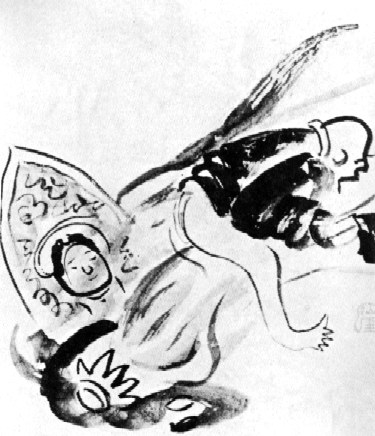 |
| A Japanese painting of a Zen monk warming his buttocks on a fire containing a burning wooden Buddha effigy. The blazing fire of practice is expected to eventually burn up the practice itself. |










